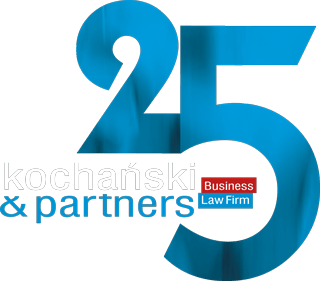The current debate about artificial intelligence tends to focus on determining who owns the rights to the results of work done with AI. Meanwhile, what is being overlooked are the consequences that the use of AI may have in building new brands, developing logos and other marketing content in the context of pre-existing trademark rights that may be infringed. This needs to be carefully considered.
Results of AI work to be scrutinised
Many companies wonder who owns the intellectual property rights to work produced by AI.
This mainly concerns copyright and patents, which protect new inventions. However, the issue of trademarks is often completely ignored. Perhaps companies think that these are irrelevant to their business, or that AI used in tools does not allow infringement of others’ rights? This is clearly a mistake.
In fact, today’s AI tools are helping to create a wide range of marketing materials (e.g. text, graphics, video, etc.). For example, ChatGPT-based solutions are increasingly generating content for social media or websites. The same tools can create private label names, along with suggested graphics and logos, under which such brands will operate in the marketplace in the future. When creating such material, generative artificial intelligence analyses a huge amount of information and data used to prepare the desired content and makes its suggestions on this basis. As practice shows, AI tools draw directly on other works. This means that when they create new material, they build on previous material, often with only minor modifications.
For example, it is therefore not impossible that if you type in a prompt to create a new brand of soft drink, you will get results based on the names or registered word and figurative marks of popular manufacturers, slightly modified. If a company chooses to use such a name, it is likely to face allegations of trademark infringement. Hiding behind a lack of knowledge or blaming AI will not effectively protect it from such allegations.
Thus, if a company uses AI-based tools to create new brands or logos without reviewing the output, it may infringe rights previously granted to others.
Chatbots can infringe IP
The growing popularity of AI-based tools has led many businesses to communicate with their customers on a daily basis using chatbots to interact with users, assist with website navigation or help resolve product issues. Chatbots use artificial intelligence and are based on algorithms and rules. They can take different forms: text, voice or video. Obviously, they are not infallible and, like other tools based on AI models, they sometimes ‘hallucinate’, giving information that is not based on the data provided or the facts.
A chatbot may therefore infringe a trade mark by claiming, for example, that company ‘X’, which operates a website, is offering a particular good or service that in fact belongs to another, unrelated company. The party concerned may consider this to be trademark infringement. Again, there is little point in claiming ignorance and blaming the chatbot.
So how can the risk of potential trademark infringement be eliminated or mitigated? By applying the golden rule of limited reliance.
After all, AI tools require proper control, including the development of appropriate regulations and guidelines regarding the possibility and extent of their use by employees or subcontractors. Only through well-defined procedures can the risk of infringement be reduced or eliminated.
Any questions? Contact the author



